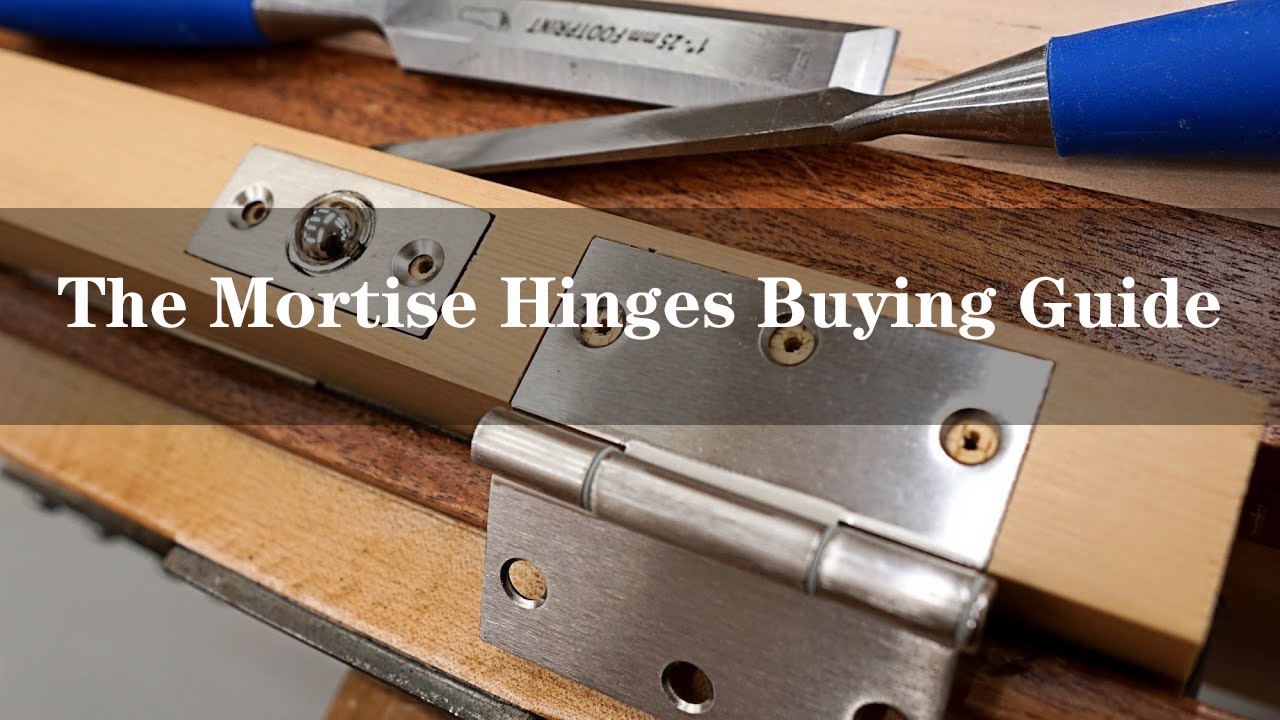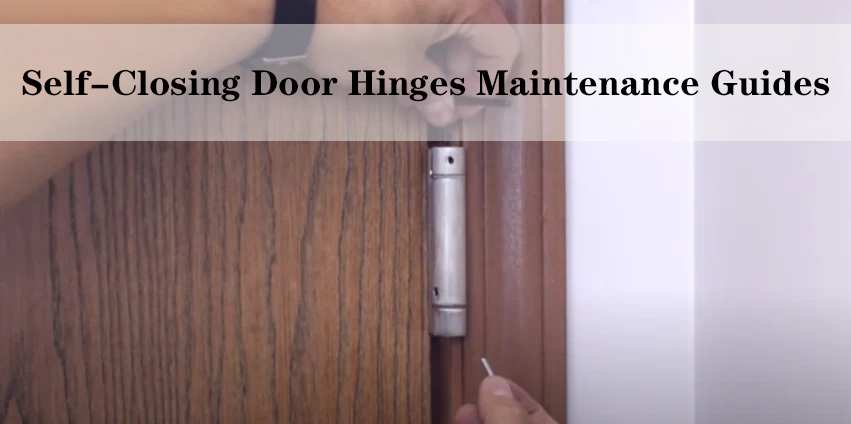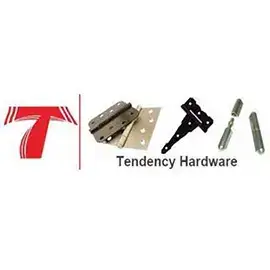When it comes to maintaining and improving the functionality of your doors, door stopper hinges can be invaluable additions. Door stopper hinges, also known as door check hinges or door stop hinges, are designed to prevent doors from swinging too far open and causing damage to walls, furniture, or the door itself. These hinges come in various types, and each type requires a specific installation method. In this comprehensive guide, we will walk you through the process of installing different types of door stopper hinges, ensuring your doors are well-protected and your home is free from unnecessary wear and tear.
Types of Door Stopper Hinges

Before diving into the installation process, it’s essential to understand the different types of door stopper hinges available. Each type serves a specific purpose and has a unique installation method. Here are the most common types of door stopper hinges:
Pin Door Stopper Hinges
Pin door stopper hinges are the simplest and most commonly used type. They consist of a hinge with a built-in pin that prevents the door from opening too wide. These hinges are ideal for lightweight doors and are relatively straightforward to install.
Installation Steps:
Gather your tools: You will need a screwdriver, a pencil, and a tape measure.
Choose the placement: Identify the ideal location for your pin door stopper hinge. This is typically around 3 to 4 inches from the edge of the door.
Mark the placement: Use a pencil to mark the spot where you’ll install the hinge on the door frame.
Attach the hinge: Secure the hinge to the door frame using screws. Ensure it’s level and tightly secured.

Test the door: Open and close the door to check if it stops at the desired angle. Adjust the hinge if necessary.
Spring-Loaded Door Stopper Hinges
Spring-loaded door stopper hinges use a spring mechanism to control the door’s opening range. They provide a bit more control than pin hinges and are suitable for heavier doors.
Installation Steps:
Gather your tools: You will need a screwdriver, a pencil, a tape measure, and a power drill (optional).

Select the location: Choose where you want to install the spring-loaded hinge on the door frame. It should be roughly 3 to 4 inches from the edge.
Mark the placement: Use a pencil to mark the hinge’s position on the frame.
Install the hinge bracket: Attach the hinge bracket to the door frame using screws. Make sure it’s level and secure.
Attach the hinge: The hinge itself has two parts, one attached to the door and the other to the door frame. Secure these parts together, ensuring the spring mechanism is aligned properly.
Test the door: Open and close the door to verify that the spring-loaded hinge functions correctly. Adjust the tension if needed.
Hinge Pin Door Stopper Hinges
Hinge pin door stopper hinges replace one of the existing hinge pins in your door, limiting its swing. They are discrete and do not require additional hardware.
Installation Steps:
Gather your tools: You will need a screwdriver, pliers, and a ladder (if the door is tall).
Select the hinge: Choose which hinge on the door you want to replace with the hinge pin door stopper hinge.
Remove the hinge pin: Using pliers, remove the hinge pin from the selected hinge.
Install the hinge pin door stopper: Insert the hinge pin door stopper into the hinge, aligning it with the holes. It should fit snugly.
Test the door: Open and close the door to ensure it stops at the desired angle. Adjust the hinge pin if necessary.
Magnetic Door Stopper Hinges
Magnetic door stopper hinges use magnets to hold the door in place when open. They are stylish and ideal for doors that need to stay open in certain positions.
Installation Steps:
Gather your tools: You will need a screwdriver, a pencil, a tape measure, and a power drill (optional).
Choose the location: Decide where you want to install the magnetic door stopper on the door and the wall or baseboard.
Mark the placements: Use a pencil to mark the locations for both the door and wall components of the magnetic door stopper.
Attach the wall component: Secure the wall component to the wall or baseboard using screws. Ensure it’s level and firmly attached.
Attach the door component: Attach the door component to the bottom of the door using screws. Make sure it aligns with the wall component’s magnetic catch.
Test the door: Open and close the door to confirm that the magnetic door stopper works as intended.
Floor-Mounted Door Stopper Hinges
Floor-mounted door stopper hinges are installed on the floor, typically near the door, to prevent it from swinging too wide. They are commonly used in commercial settings and for heavy doors.
Installation Steps:
Gather your tools: You will need a screwdriver, a pencil, a tape measure, and a power drill (optional).
Select the location: Determine where you want to install the floor-mounted door stopper. It should be placed in a position that prevents the door from hitting the wall or other objects.
Mark the placement: Use a pencil to mark the spot on the floor where you’ll install the door stopper.
Install the floor bracket: Attach the floor bracket to the marked spot on the floor using screws. Ensure it’s level and securely fastened.
Attach the door arm: The door arm is the part that attaches to the door and interacts with the floor bracket. Secure the door arm to the door using screws.
Test the door: Open and close the door to check if it stops at the desired angle. Adjust the door arm if necessary.
Wall-Mounted Door Stopper Hinges
Wall-mounted door stopper hinges are installed on the wall, rather than on the door or door frame. They are ideal for doors that need to stop at a specific point on the wall.
Installation Steps:
Gather your tools: You will need a screwdriver, a pencil, a tape measure, and a power drill (optional).
Choose the location: Decide where you want to install the wall-mounted door stopper on the wall.
Mark the placement: Use a pencil to mark the spot on the wall where you’ll install the door stopper.
Install the wall bracket: Attach the wall bracket to the marked spot on the wall using screws. Ensure it’s level and securely fastened.
Attach the door arm: The door arm is the part that attaches to the door and interacts with the wall bracket. Secure the door arm to the door using screws, making sure it aligns with the wall bracket.
Test the door: Open and close the door to verify that the wall-mounted door stopper functions correctly. Adjust the door arm if needed.
These are the most common types of door stopper hinges, each with its unique installation method and application. Choosing the right type of door stopper hinge depends on your specific door and requirements, such as door weight, desired stopping angle, and aesthetic preferences. Always follow the manufacturer’s instructions and safety guidelines when installing door stopper hinges.
General Installation Tips
Regardless of the type of door stopper hinge you choose, here are some general tips to ensure a successful installation:
Patience and Precision: Installation may take some time, so be patient and avoid rushing the process. Precision is crucial to ensure that the door stopper hinge functions correctly and looks neat.
Marking and Alignment: Use a pencil or marking tool to make accurate markings on the door, door frame, or wall for the hinge’s placement. Check and double-check the alignment to avoid any mistakes.
Pre-Drilling Holes: When attaching screws, it’s often a good practice to pre-drill pilot holes, especially if you are working with hardwood or other dense materials. This prevents the wood from splitting and makes it easier to drive screws in.
Screw Length: Choose the appropriate screw length based on the thickness of the door, frame, or wall. Screws that are too long can protrude or damage the opposite surface.
Test Fit: Before finalizing the installation, do a test fit of all components to ensure they work together smoothly and securely. This helps identify any potential issues before the final attachment.
Adjustability: Some door stopper hinges, like spring-loaded or magnetic ones, may have adjustable features to control the stopping angle. Familiarize yourself with these adjustments and make any necessary changes to achieve the desired result.
Finishing Touches: After the hinge is installed and working correctly, you may want to touch up the surrounding area with paint or finish to make the installation blend seamlessly with the door or wall.
Maintenance: Regularly inspect and maintain your door stopper hinges to ensure they continue to function correctly over time. Lubricate moving parts if needed and tighten any loose screws.
Professional Help: If you’re unsure about any aspect of the installation or if you have a complex door setup, consider seeking professional assistance to ensure the door stopper hinge is installed correctly.
Conclusion
Installing door stopper hinges is a practical way to protect your doors, walls, and furniture from damage while adding convenience to your daily life. With various types of door stopper hinges available, you can choose the one that best suits your needs and follow the specific installation instructions provided by the hinge manufacturer. By following this comprehensive guide and the tips provided, you’ll be well-equipped to install door stopper hinges effectively and keep your home in excellent condition for years to come.






















